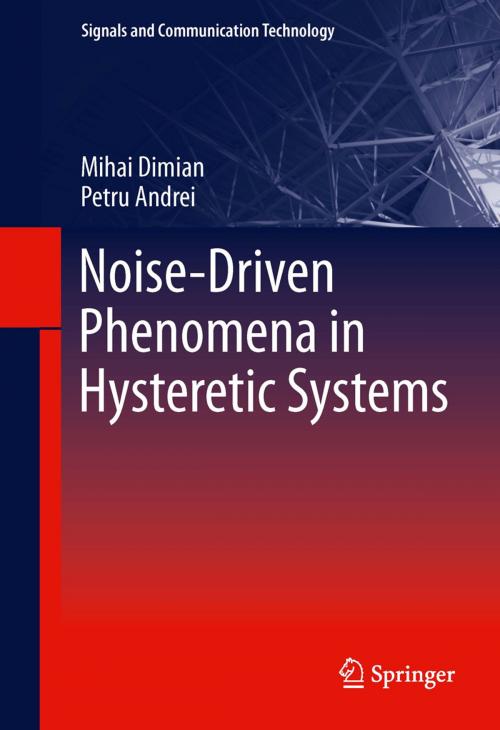Noise-Driven Phenomena in Hysteretic Systems
Nonfiction, Science & Nature, Technology, Engineering, Mechanical, Electronics| Author: | Mihai Dimian, Petru Andrei | ISBN: | 9781461413745 |
| Publisher: | Springer New York | Publication: | November 4, 2013 |
| Imprint: | Springer | Language: | English |
| Author: | Mihai Dimian, Petru Andrei |
| ISBN: | 9781461413745 |
| Publisher: | Springer New York |
| Publication: | November 4, 2013 |
| Imprint: | Springer |
| Language: | English |
Noise-Driven Phenomena in Hysteretic Systems provides a general approach to nonlinear systems with hysteresis driven by noisy inputs, which leads to a unitary framework for the analysis of various stochastic aspects of hysteresis. This book includes integral, differential and algebraic models that are used to describe scalar and vector hysteretic nonlinearities originating from various areas of science and engineering. The universality of the authors approach is also reflected by the diversity of the models used to portray the input noise, from the classical Gaussian white noise to its impulsive forms, often encountered in economics and biological systems, and pink noise, ubiquitous in multi-stable electronic systems. The book is accompanied by HysterSoft© - a robust simulation environment designed to perform complex hysteresis modeling – that can be used by the reader to reproduce many of the results presented in the book as well as to research both disruptive and constructive effects of noise in hysteretic systems.
Noise-Driven Phenomena in Hysteretic Systems provides a general approach to nonlinear systems with hysteresis driven by noisy inputs, which leads to a unitary framework for the analysis of various stochastic aspects of hysteresis. This book includes integral, differential and algebraic models that are used to describe scalar and vector hysteretic nonlinearities originating from various areas of science and engineering. The universality of the authors approach is also reflected by the diversity of the models used to portray the input noise, from the classical Gaussian white noise to its impulsive forms, often encountered in economics and biological systems, and pink noise, ubiquitous in multi-stable electronic systems. The book is accompanied by HysterSoft© - a robust simulation environment designed to perform complex hysteresis modeling – that can be used by the reader to reproduce many of the results presented in the book as well as to research both disruptive and constructive effects of noise in hysteretic systems.















